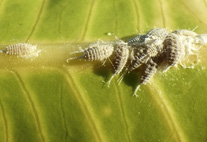Abstract
Two new genera and five new species of teloganodid mayflies (Ephemeroptera: Pannota: Ephemerelloidea) are described based on larvae from south India: Janohyphella indica, n. gen., n. sp., Indoganodes jobini, n. gen., n. sp., Teloganodes sartorii, n. sp., Dudgeodes palnius, n. sp., and Derlethina tamiraparaniae, n. sp. Janohyphella, n. gen., is distinguished from the larvae of other teloganodid genera by having a combination of three subequal caudal filaments, lamellate gills on abdominal segments II through V and posterolateral processes well-developed on abdominal segments II through IX, except III. Indoganodes, n. gen., is distinguished from the larvae of other teloganodid genera by having three subequal caudal filaments, lamellate gills on abdominal segments II through VI, posterolateral projections weakly developed on abdominal segments I through V, but distinct on segments VI through IX. Our new species of Dudgeodes Sartori, 2008 and Derlethina Sartori, 2008 represent the first discoveries of these genera outside Southeast Asia, with the latter genus previously considered endemic to Borneo. Emendations to the larval species key of known Oriental Teloganodidae are provided. We hypothesize that the occurrence of the new taxa in southern India is a result of the tectonic events associated with the split-up of Gondwana. This illustrates the profound biogeographical significance of how vicariance led to the establishment of some distinct oriental lineages initially on the rafting Indian Deccan Plate, which might have triggered dispersal events for subsequent species diversification in Southeast Asia.

